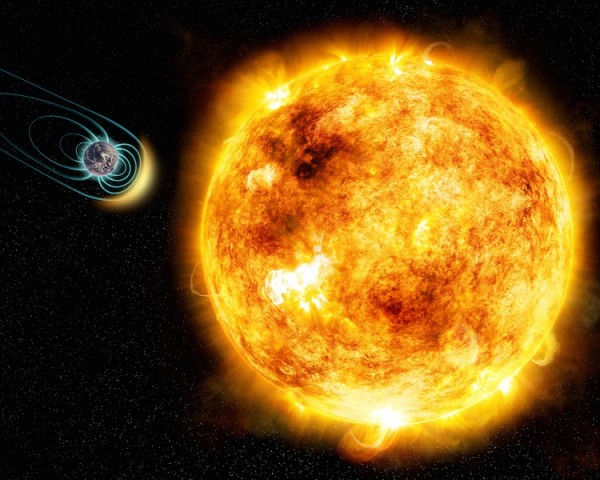By Ana Verayo, | March 27, 2016

A magnetosphere can shield a planet from its sun's superflares, making it more conducive for life.
A new study details how a superflare from the sun can instantly wipe out life on Earth as we know it. Solar eruptions often send some streams of powerful solar energy towards our direction where Earth's magnetic field protects the planet from this intense radiation.
Like Us on Facebook
These streams of energetic particles are also known as solar flares that often generate stunning displays of northern light or auroras in the night sky that can be seen near the polar regions.
The first superflares where detected recently by astronomers with the help of NASA's Kepler Space Telescope to study distant stars and galaxies. To date, astronomers still do not know how these flares are produced by the sun, where they speculate that these could involve massive flares that are rich in plasma that could also be the same process how regular flares are made.
The most destructive superflare to date happened in 1859 where the sun sent an extremely powerful energy stream of charged particles and plasma to Earth that generated northern lights so bright that it was seen from Cuba, which is known as the Carrington Event.
However, other stars can emit more powerful superflares than can reach up to 10,000 times more massive than the Carrington Event of 1859. In this new study, magnetic fields that surround other stars were observed and analyzed to compare them with powerful superflares.
According to Christoffer Karoff from the Aarhus University in Denmark, those stars that emit superflares have stronger magnetic fields compared to the sun's own magnetic fields since superflares are also formed in a similar manner as solar flares.
Results of this new study revealed that 90 percent of stars that produce superflares were determined to have stronger magnetic fields than the sun's magnetic fields. This finding suggests that even though a superflare from our own sun is highly unlikely, this is also not impossible.
Evidence revealed that a superflare probably hit the planet in 775 CE where tree rings showed that a sudden significant increase of radioactive concentrations of isotope carbon 14 which can only be produced by cosmic rays from deep space that smashed into the planet's atmosphere.
Researchers now estimate that the sun could possibly emit super powerful flares once every 1,000 years on average. The consequences of this superflare of this magnitude can destroy electronics and the ozone layer, putting life on Earth in danger from more harmful, radioactive energy from space.
This new study is published in the journal Nature Communications.
-
Use of Coronavirus Pandemic Drones Raises Privacy Concerns: Drones Spread Fear, Local Officials Say

-
Coronavirus Hampers The Delivery Of Lockheed Martin F-35 Stealth Fighters For 2020

-
Instagram Speeds Up Plans to Add Account Memorialization Feature Due to COVID-19 Deaths

-
NASA: Perseverance Plans to Bring 'Mars Rock' to Earth in 2031

-
600 Dead And 3,000 In The Hospital as Iranians Believed Drinking High-Concentrations of Alcohol Can Cure The Coronavirus

-
600 Dead And 3,000 In The Hospital as Iranians Believed Drinking High-Concentrations of Alcohol Can Cure The Coronavirus

-
COVID-19: Doctors, Nurses Use Virtual Reality to Learn New Skills in Treating Coronavirus Patients







